The magnificent flowering garden is not easy to pride, but also there is a fade for the soul of any gardener. Sometimes it is difficult to please some colors and plants so that they fully could show their beauty. But among them, one very unusual tree hydrangea called Anabel is distinguished among them. It is impeccable in every sense: she has big milked inflorescences, it is easily rooted in any soil, perfectly tolerate trimming, is distinguished by complete frost resistance and is considered the most unpretentious beauty of the garden.
Hydrangea Tree Anabel - varietal features
Anabel, or Hydrangéa Arboréscens, is considered one of the old, but still popular hydrangea varieties. Anabel was opened in the middle of the XVIII century, or rather in 1746 in the province of Anna, located in Ohio (USA). After a couple of decades, this tree hydrangea "scattered" around the world.
- Anabel is a fast-growing leafy shrub. During the year, his domidated crown grows by 12-15 cm in height. The leaves have the form of oval with janzbins at the edges; In summer, leaves are bright, light green, with glitter. Closer to the autumn, their colors tightly, the yellowness appears, and before the arrival of winter foliage.
- Hydrangea Tree Anabel is distinguished by winter hardiness. Its frost-resistant threshold -40⁰. But young shoots can freeze at -20 ° C.
- The plant is successfully growing in a half, but active bloom occurs only on the outdoor sunny area. Anabel patiently withstands drought, but it is better to provide moderate watering to protect the foliage. Hydrangea loves an open space, since its crown often reaches 2.5-3 m in diameter. But when choosing a landing room, it should be borne in mind that it does not tolerate drafts.
- Hydrangea Anabel planted in the garden looks spectacular and at the same time romantic. Her aroma is light and pleasant. Despite its gentle appearance, this hydrangea does not require painstaking care, it perfectly winter even at the lowest temperatures and is characterized by astounding resistance to diseases. It is capable of blossoming every year without making multicomponent fertilizers, and retains its decorativeness up to 50 years in one place without transplantation.
- Hortensia Anabel is spread in a wild form throughout Japan, North America and China. In nature, it rarely grows above 3 m in height and thickly covered by the thyroid inflorescences of the average values \u200b\u200bconsisting of small flowers.
- In Culture, Anabel is found everywhere and easily gets used to any climate and is greatly cultivated. Since it regularly passes a trimming, cultural shrubs rise at 1.5 -2 m above the ground and are covered by larger inflorescences up to 20 cm in diameter.
Variety of tree hydrangea Anabel
Anabel in color causes admiration. Flowering falls for the period from July to October. The color largely depends not only on the type of hydrangea, but also from the soil in which it grows. The most common hydrangea anabel blooms with white multi-flowered umbrellas. They can be snow-white, with light green or gentle pink base of petals.
Pink flowering happens one of the variations of the hydrangea of \u200b\u200ba tree-like - Pink Anabel. The plant appearance externally, except for the color, does not differ from the snow-white beauty. Pink Anabel prefers alkaline soil, rich watering and sunny plot. Blooms with the arrival of summer and retains its inflorescences to deep autumn.
The most beloved hydrangea gardeners with huge white inflorescences, under which almost all foliage is hidden, is Strong Anabel. She is perhaps the most luxurious representative of this family. In the caring of Hydrangea Strong Anabel tree, too, not capricious, and requires only regular trimming and minimal fertilizer making so that the buds are not smaller.
Hydrangea Tree Anabel - Landing
The seedlings of the tree hydrangea are planted in early spring or at the beginning of autumn, accordingly it is necessary to plant in May or September. The planting in the spring is carried out at the stage of bootonization, when the flowering has not yet begun and the buds are dense and not to the end formed. In the fall, during the landing, it is important to pruning the remaining inflorescences so that hydrangea is safely rooted.
Which site to choose for hydrangea of \u200b\u200bthe tree Anabel
If you choose a suitable place for hydrangea in advance, you can forget about its transplant for many years and just enjoy it with beauty and aroma. First of all, you need to exclude the presence of strong winds on the selected area. Make sure that there is a shelter nearby, which will be a barrier to the formation of drafts. Decorative trees will cope with this role, high fence or wall.
No less important is the solar factor. Anabel does not like the scorching sun, but most of the day she should be well covered. Ideally, a moderate half-day is suitable in the morning.
Hydrangea is a moisture shrub. It is necessary to limit the presence of trees near her with a large root system and regularly moisturize the soil at hot season. If the soil is constantly dry, there is a high probability that the buds in this season will not appear.
Soil preparation for hydrangea of \u200b\u200btree Anabel
Hydrangea is poorly experiencing a transplant, so the preparation of the soil should be conscientious. Active bootonization and rapid growth of hydrangea provides drainage and nutrient soil with neutral or acidic pH. It is preferable to plant a bush in loam - a ball of loose clay soil with very small particles and an admixture of sand. Such a substrate is laid out in the landing pit for 7-8 days before the estimated landing so that it is completely saturated with oxygen and drove. Additionally, the pits need to make fertilizers: phosphate for white and pink hydrangea, potassium - for blue and purple inflorescences.
Please note: Lime and ash, you do not need to be put in the soil before landing. This will worsen the rooting and flowering of hydrangea.
Stages of landing bush hydrangea tree Anabel in soil
Hydrangea Tree Anabel, according to gardener reviews, it is easy to sit down and quickly coming up in a new place. There are no special secrets, there is simply a common landing with observance of nonspecific rules of agrotechnology.
Hydrangea landing Anabel in the ground takes place in such a sequence:
- The root system of a young seedling needs to be disinfected. For this, a weak solution of potassium permanganate is suitable.
- The landing pit should be wide with a depth of 50-55 cm. Fertilizers and a layer of suitable soil point are made on the bottom (this has already been said slightly higher).
- Then the root system is immersed in a hole to the root neck and falling asleep with a loose substrate and a little tamper.
- At the end, hydrangea is abundant in a circle, while trying not to pour water on the roots.
- If the landing passes on a hot day - the above-ground part of the hydrangea is pronounced, if in the cold - the greenhouse canopy is put.
Placement of Hydrangea Anabel is blooming only for 3-4 years.
Anabel Hortensia Tree - Garden Care
After landing, it is important to maintain the soil moisture using mulching. Mulch will also prevent the growth of weed grass and serve as a barrier that protects the root system from overheating. Mulching material (chips, wood bark, peat) is laid out by an 8-centimeter ball in a rolling collar.
Watering another rapid seedling is often often and abundantly. While the above-ground part does not grow enough, it is necessary to protect it from pests. Use a mortar of manganese, various insecticides, borobo liquid.
Mulching is needed at the end of the spring when the soil is still wet, but it has already been warm enough. Over time, the mulch will overload and will become an excellent fertilizing substrate with a suitable level of acidity.
To ensure suitable conditions for the growth and flowering of hydrangea hydrangea, Anabel needs to carry out soil fertilizer during the landing, at the end of May and in the early days of July. As a fertilizer, you can use a diluted cowboy or chicken litter in a ratio of 1:10 with water. Additionally, minudge is introduced - superphosphate, potash nautimera, urea (2: 1: 1). You can regularly water the bush with a fertilizer for hydrangea with an elevated content of iron and magnesium.
Hydrangea Tree Anabel - Pruning and wintering
The appropriate time to trim hydrangea is the end of autumn. Cutting inflorescences, old or damaged shoots. Conduct sanitary trimming can also be early in spring until the appearance of leaves. You need to choose the most durable stems that bloomed and shorten them up to 5 cm, the rest of the shoots need to completely cut. It will strengthen the future bloom, strengthens the stalks.
All types of tree hydrangeas are distinguished by winter resistance, and Anabel, including. Special measures for the preparation for winter are not required. It is necessary to carefully hug the stalks to the ground, try to pin them so that they are not damaged, and then hide the low layer of foliage foliage. After the end of the frost, the shelter is removed.
How to propagate Anabel Hydrangea tree
The easiest and most effective way to multiply Hydrangea Anabel is a shower. In the fall during trimming, several cuttings are selected with a length of 15 cm. It is necessary to pay attention to the fact that the shoots that did not bloom are better rooted. Then cuts are kept in any preparation that stimulates the growth of the roots, and then planted in the ground. With the help of a cut-down bottle, a greenhouse structure is created. It must be possible to operate periodically to enrich the earth with oxygen.
Before the onset of cold weather, young sprouts must be covered with agricultural. If they grow in a climate with harsh winters, it is better to transplanses them into a pot and remove into the house or cellar. In May, they are planted back into the open ground.
It is possible to reproduce the tree of the Holyting Hydrangea and in another way - arcoid tanks. In September, a shallow ditch is digging near the bush. Then a healthy annual escape is chosen and a shallow cut is made on it. Escape stacked in ditch, cut down and fixed in this position using wire. At the end, the ditch is falling asleep, they are abundantly poured and pouted with a mulch material. For the second year, the drain is separated from the maternal bush and transplants to the right area.
What diseases and pests can hit Hydrangea tree Anabel
Hydrangeas are extremely rare. If this happens, then the culp of the disease becomes a web tick. This invisible pest is for a long time in the foliage and begins to suck all the juices from the plant. It is possible to understand that the bush is ill, it is possible in yellow and fallen leaves. If it does not handle the hydrangea acaricides on time, it can perish.
Sometimes mildew can appear. After infection, yellow-brown spots appear on the leaves. Over time, foliage is falling, and the plant dies. This fungal disease is successfully treated with a spraying of copper with a solution.
If hydrangea is planted into alkaline soil, it is inclined to the development of chlorosis. The plant acquires an unsightly look: leaflets are blossomed, as if burning in the sun, blossom disappears. Eliminate fertilizers with the maximum iron concentration helps to get rid of the disease.
Changing the color of petals Anabel Hydrangea Tree with a photo
Anabel is a unique representative of the Hydrangea family. The mystery of this species lies in the exclusive property of changing the color of the petals. This happens at the request of a gardener, which by making certain substances changes the pH of the soil, which causes a change in white on blue, scarlet or purple. Experienced gardeners can even ensure that the same bush will bloom in different ways all the time.
Such a feature of Anabel lies in its ability to actively absorb the coloring elements and some chemicals affecting pigments in the petals. If you dream to grow a gentle blue hydrangea, you need to choose hydrangea tree varieties of anabel white and pour the soil, making drugs with aluminum.
Soil should be poured with sour solution until the pH level does not reach 5.5, but not higher. At the time of converting color of petals It is important to completely eliminate the introduction of phosphorus-containing fertilizers. It is better to carry out such an experiment on an adult hydrangea, since young seedlings may die.
The effect will not be instant, so you have to wait. Some gardeners get to change the color in one season, another is required for this a couple of years.
If you have a white hydrangea, and you want it to acquire a rich pink color, you need to bring the soil to the neutral pH level. To do this, it will take the dolomite flour, lime or phosphoric fertilizers. But in this matter, the main thing is not to rearrange - an excess of chalk and phosphorus can completely destroy Hington.
Fertilizers pick up with high phosphorus and nitrogen content, and necessarily without potassium. Or, it is possible to buy a hydrangea of \u200b\u200bhydrangea of \u200b\u200ba tree-like Pink Anabel to buy in the store, and then maintain the required pH level of the soil. So it will be much more convenient, because you do not have to wait long until the plant changes the color.
Historical fact! Archaeologists around the world find fossil residues of hydrangea, which is approximately 55-70 thousand years.
Hydrangea Anabel is an excellent addition to landscape design. It can grow secluded, racing up to 2-3 m wide or perfectly to get along with other "residents" of the garden. I put this beauty in my site, you can admire it with gentle blooming a whole season without applying special efforts.

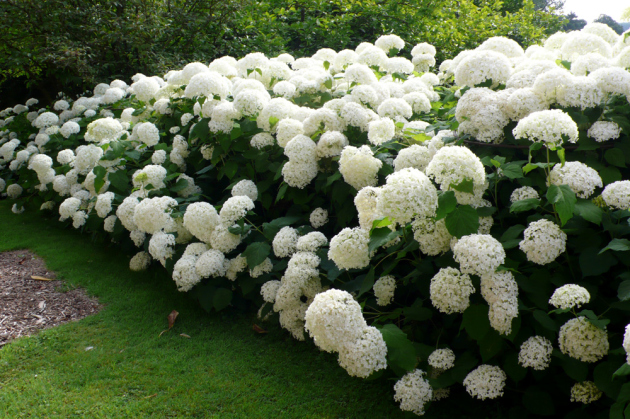
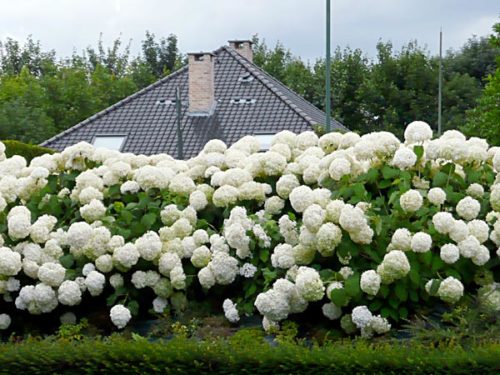
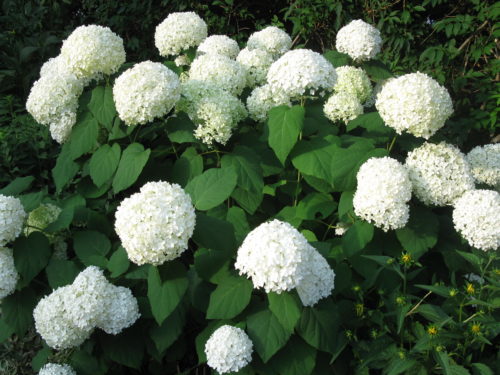
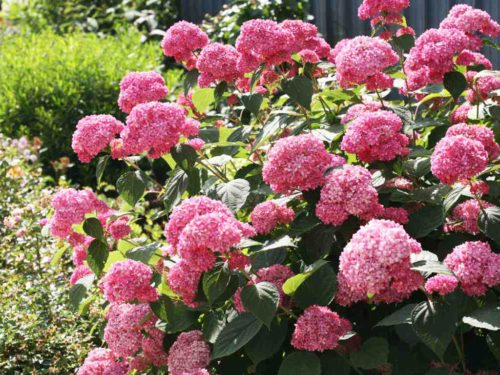
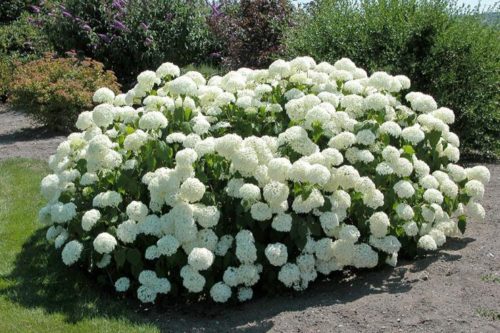
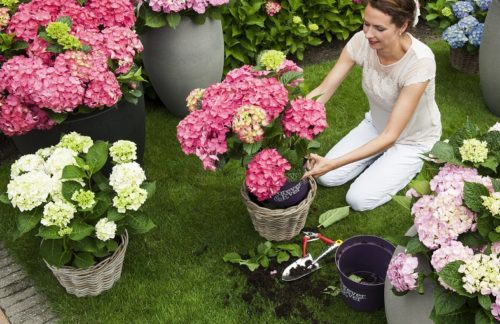

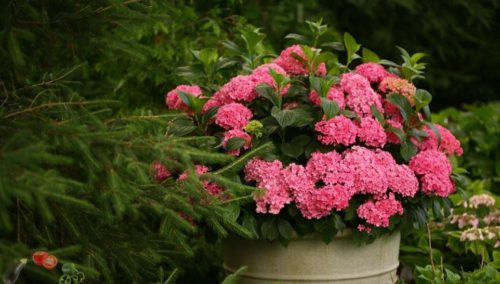

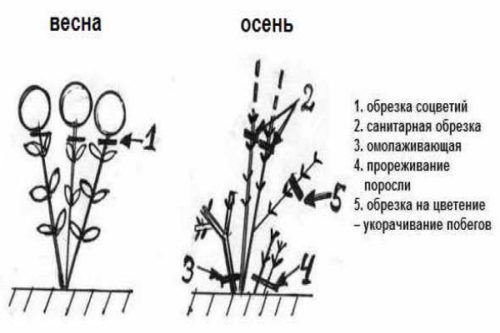
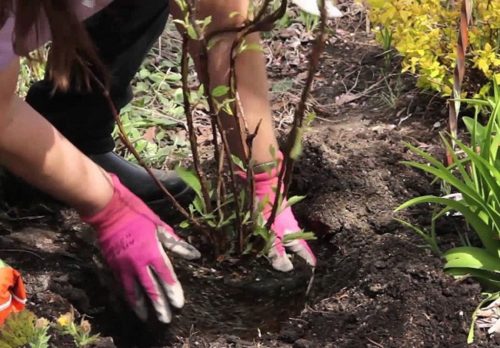
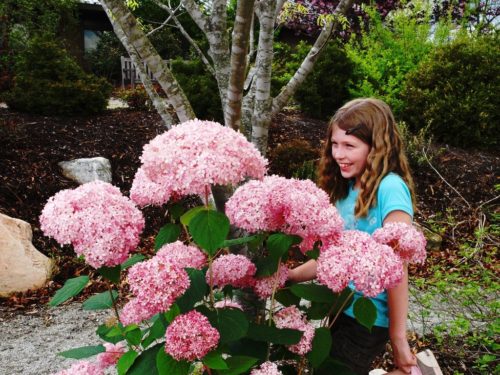
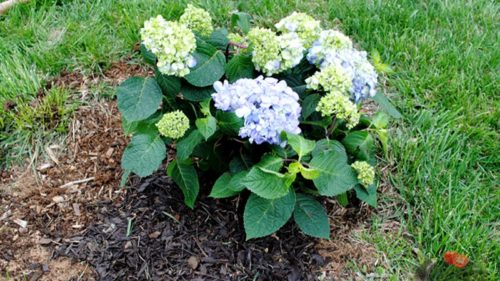
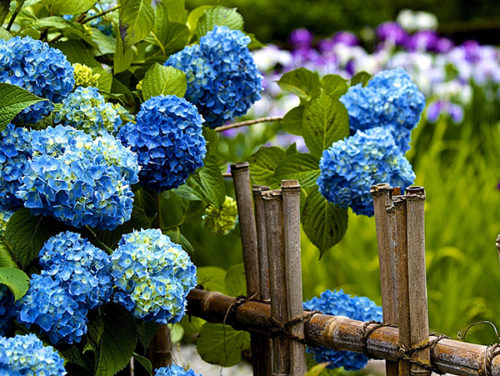

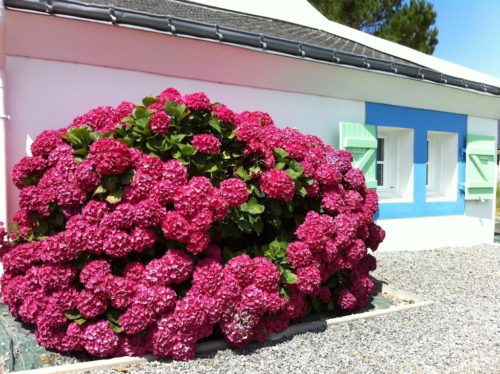
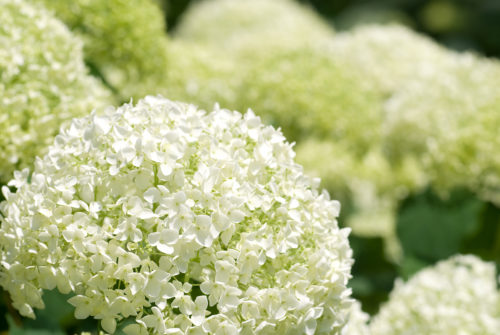












 Start a discussion ...
Start a discussion ...